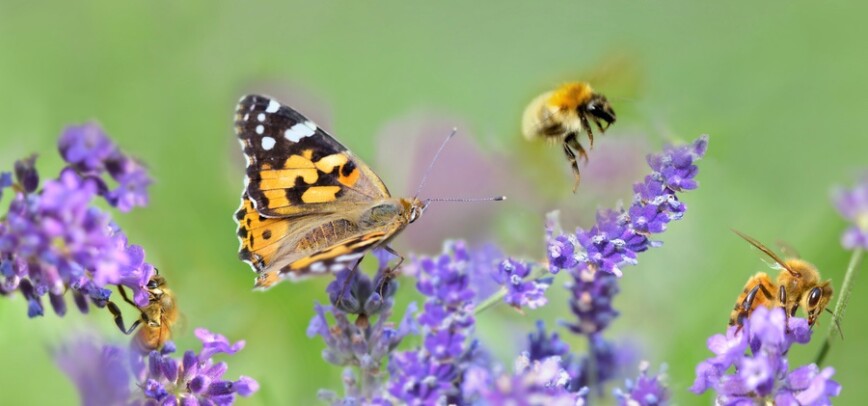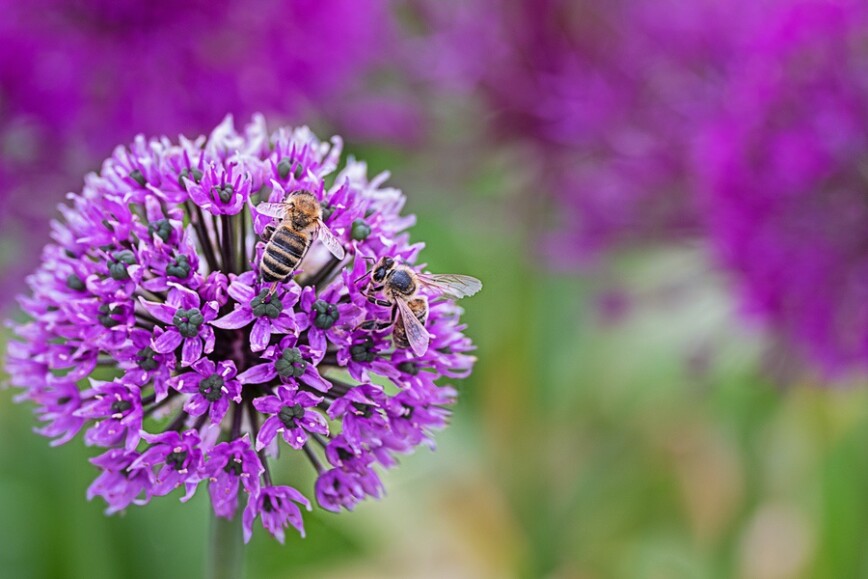Pollinators are creatures that carry pollen on their bodies, inadvertently fertilising plants as they go about their business. In turn, the plants are able to reproduce, sustaining our ecosystem and providing us with food.
Birds, bats, bees, butterflies, beetles, and other small mammals that pollinate plants are responsible for bringing us one out of every three bites of food. Pollinator.org
Pollinators—and specifically bees—are crucial to our economy. Without them, it would cost farmers a fortune to pollinate crops each year. This would skyrocket the cost of food production leading to higher costs for consumers.
But pollinators don’t just help with plant fertilisation. They support other wildlife, stabilise soils and even support healthy ecosystems that clean the air. So it would be a catastrophe if they were to decline heavily in number, right?
Yes, and sadly, this is the reality some pollinators face. Numbers of honey bees, bumblebees and various species of butterfly have started to dwindle due to a loss of habitat, increasing pollution, use of pesticides and climate change. But there’s a small change each and every one of us can make to support our precious pollinators! And it’s quite simple:
[C]hoosing flowers carefully makes a big difference to pollinators at zero cost. It costs no more to buy bee-friendly flowers and they are no more difficult to grow and are just as pretty […] Bees are not as common as they used to be. What the public can do to reverse the trend is to provide the nectar and pollen they need by planting bee-friendly flowers in their gardens.” Francis Ratnieks, professor of apiculture at Sussex University
You can help bees and butterflies thrive by adding pollinator-friendly plants to any outdoor space. Whether you’re planting a large border around your lawn or add a few pots by your back door, all efforts will help the cause.
You’re probably wondering which plants are popular with pollinators? Here are five to get you started:
1. Lavender
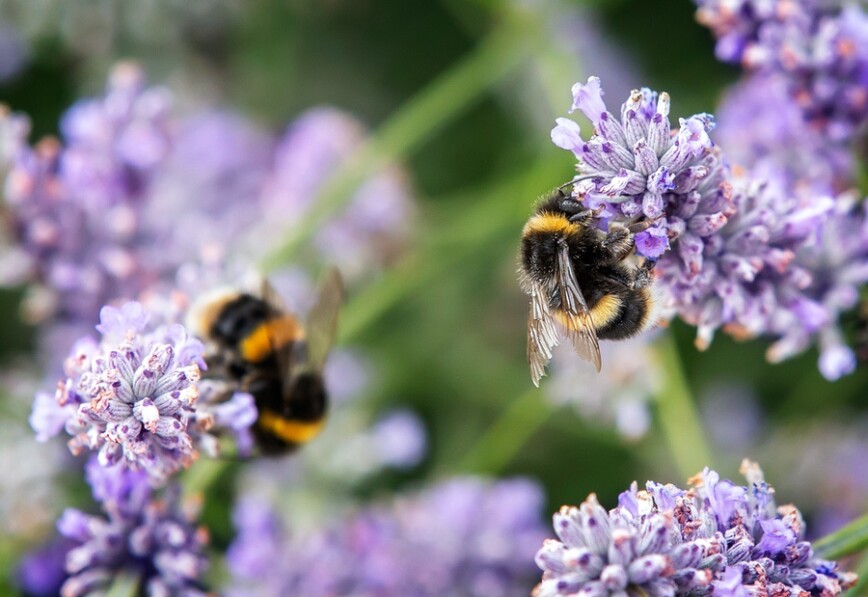
Lavender is universally known thanks to its familiar scent. It’s been used in traditional medicine and cosmetics for centuries. The most common species features purple flowers on long silver-green stems, though lots of different variations are available.
Most pollinators love lavender, but it’s a particular favourite of the humble bumblebee. Apparently, studies have shown that bumblebees visit lavender plants far more than their cousins, honey bees.
The lavender shrub flowers in late spring into summer. It’s easy to grow. Learn how to plant it on this page.
2. Borage
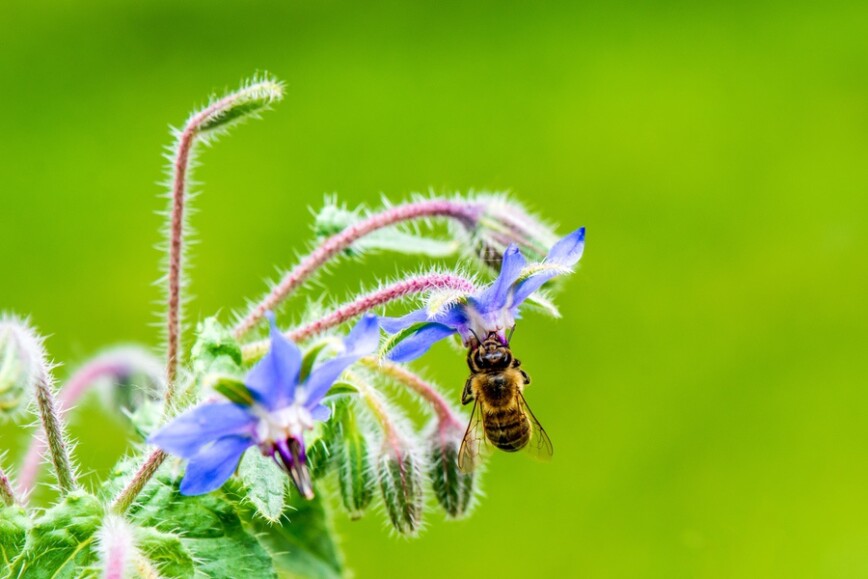
This blue flowering herb is commonly known as starflower, due to its distinctive star-shaped petals. In the UK, borage will typically flower between June and September.
Plant this flower to help honey bees, who love borage pollen. In fact, some beekeepers grow borage to help boost honey production!
Learn how to plant borage on this page.
3. Wild Marjoram
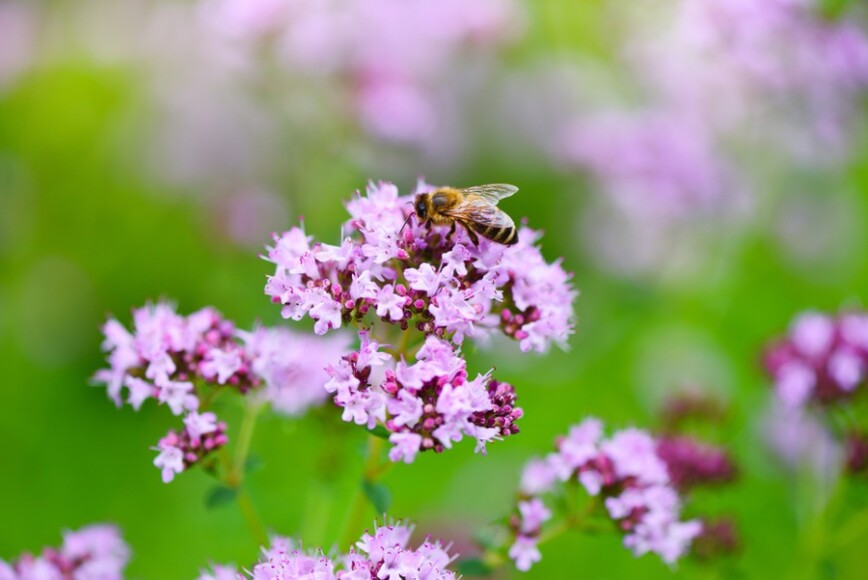
This aromatic herb is a favourite with pollinators. It’s a great all-rounder, attracting a wealth of different insects to its delicate pink petals. It flowers from summer through to early winter. Learn how to add wild marjoram to your herb garden.
4. Allium
If you’re familiar with this plant, you’ll know the most common variety (the Allium Globemaster) features a large purple pompom on a long green stalk. Plant plenty of allium bulbs in your border to create an impressive display. Alliums flower for a long time, typically from spring into early summer, which means bees and butterflies can enjoy this flower’s pollen for several months. The bulbs are easy to plant too. Find out more here.
5. Buddleja
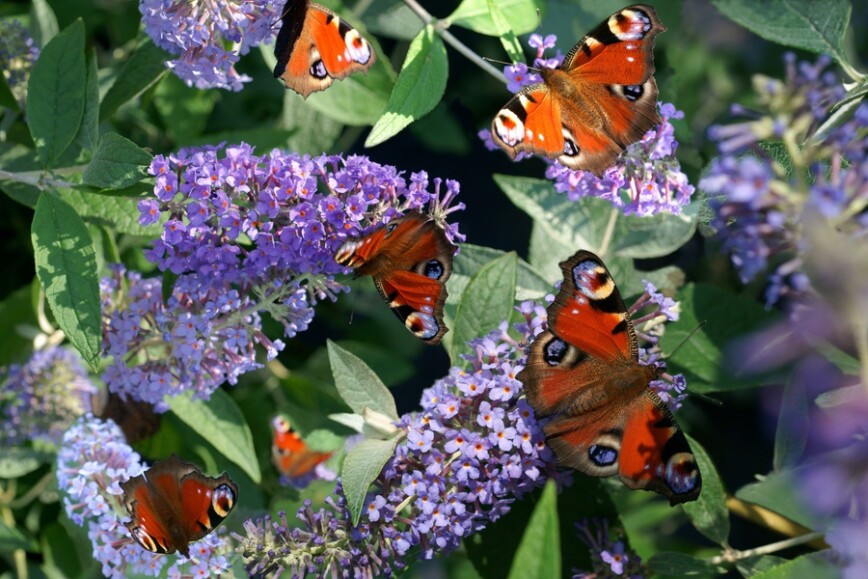
Buddleja is commonly known as “the butterfly bush” for obvious reasons. The beautiful flying insects love eating the fragrant plant’s nectar.
There are lots of different types of buddleja. From compact shrubs with blue flowers to evergreen shrubs with white shoots. And they can be found all over the planet. There are a few South American species that have evolved long red flowers to attract hummingbirds as exclusive pollinators!
Unless you live in South America, we assume you’re planning to attract butterflies and bees to your garden, not hummingbirds. If so, plant one of the following types of buddleja to attract butterflies, as recommended by The Royal Horticultural Society: Border Beauty, Leela Kapila, Florence, Pixie White, Dartmoor, Royal Red and Summerhouse Blue.
One final fact:
You might have noticed the plants on this page are all pink, purple and blue! That’s no coincidence! Science has shown that these colours are particularly attractive bees due to their remarkable eyesight and ability to see ultraviolet rays. You can learn more about the mechanics on this page.
